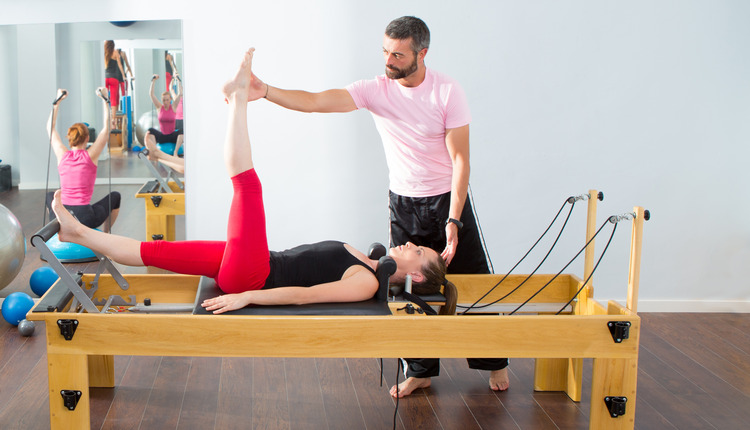
Meditating is often misunderstood. When you think of meditating, what do you picture? Yogis, chanting the OM? Or a monk sitting in a silent trance? If this is what you picture then you are correct, but not entirely. There are many forms of meditation. You just have to find the type of meditation that works for you and your clients. By teaching your clients simple one-minute meditations, you can help them ease stress, improve energy levels, and increase mental focus.
Most of the time, when meditating, our minds just won’t “go blank” like we think they should. One common misunderstanding is thinking the mind has to be totally clear in order to be meditating. As an instructor, our job is to teach the clients not to overthink it! Thoughts are actually part of meditation. Encourage your clients- just like physical challenges, we have to practice to see improvement.A short meditation segment is a great way to start or end any fitness class. It does not have to be a yoga class! You do not even have to call it “meditation”. Just make it part of your class routine. Your clients may even notice a difference in their entire workout performance from just one minute of quiet breathing!
The following three meditation techniques all encompass one major element- BREATHING. Essentially, you are teaching your clients to consciously breathe. Throughout the day, we take short, shallow breaths so just by taking a moment to breathe deeper and longer, your clients will instantly feel better.
(Before beginning the full minute, take time to set the clients up physically and mentally. For all these techniques, position your clients comfortably with a tall spine, shoulders and face relaxed. Sitting crossed- leg style is a common position often used for meditation. Although these meditations can be done lying down as well. Rest the arms and hands wherever they feel comfortable. They can close the eyes, or find a focal point, a point that is not moving, to focus on. Play calming music, although not necessary, it can help people relax. Begin with a Welcome Breath- a smooth, inhale in through the nose, and a slow exhale through the nose. Through all meditations, exhale every last drop of air out, which will cleanse the lungs of stale, old air. Tell your clients to notice the cool air going into the nostrils and then notice the warm air coming out of the nostrils. As the instructor, give some cues through the first few breathes and then make sure not to talk through most of the minute.)
(When the minute is up, tell them to take a final deep inhale and exhale to signify the end of the meditation practice.)
Most of the time, when meditating, our minds just won’t “go blank” like we think they should. One common misunderstanding is thinking the mind has to be totally clear in order to be meditating. As an instructor, our job is to teach the clients not to overthink it! Thoughts are actually part of meditation. Encourage your clients- just like physical challenges, we have to practice to see improvement.A short meditation segment is a great way to start or end any fitness class. It does not have to be a yoga class! You do not even have to call it “meditation”. Just make it part of your class routine. Your clients may even notice a difference in their entire workout performance from just one minute of quiet breathing!
The following three meditation techniques all encompass one major element- BREATHING. Essentially, you are teaching your clients to consciously breathe. Throughout the day, we take short, shallow breaths so just by taking a moment to breathe deeper and longer, your clients will instantly feel better.
(Before beginning the full minute, take time to set the clients up physically and mentally. For all these techniques, position your clients comfortably with a tall spine, shoulders and face relaxed. Sitting crossed- leg style is a common position often used for meditation. Although these meditations can be done lying down as well. Rest the arms and hands wherever they feel comfortable. They can close the eyes, or find a focal point, a point that is not moving, to focus on. Play calming music, although not necessary, it can help people relax. Begin with a Welcome Breath- a smooth, inhale in through the nose, and a slow exhale through the nose. Through all meditations, exhale every last drop of air out, which will cleanse the lungs of stale, old air. Tell your clients to notice the cool air going into the nostrils and then notice the warm air coming out of the nostrils. As the instructor, give some cues through the first few breathes and then make sure not to talk through most of the minute.)
- Counting Meditation- (The counting is done in the head.) Inhale, count to four, and exhale, count to six, seven, or even eight. Let the exhale be longer than the inhale.
- “In and Out” Mantra- Inhale, think the word “In” and exhale, think the word “Out”. Imagine inhaling positive, peaceful energy, and exhale any stress or tension. Urge your clients to use their own mantra. For example, they may want to inhale and think the word “Be” and exhale, think the word “Still”.
- Visualization- (This meditation works best with the eyes closed.) Instruct your clients to breathe deeply in and out, think of a place where they feel most peaceful. It may be the beach, a favorite vacation spot, or sitting around a table with those they love. Ask them to notice the way this place smells, looks, tastes, feels.
(When the minute is up, tell them to take a final deep inhale and exhale to signify the end of the meditation practice.)











